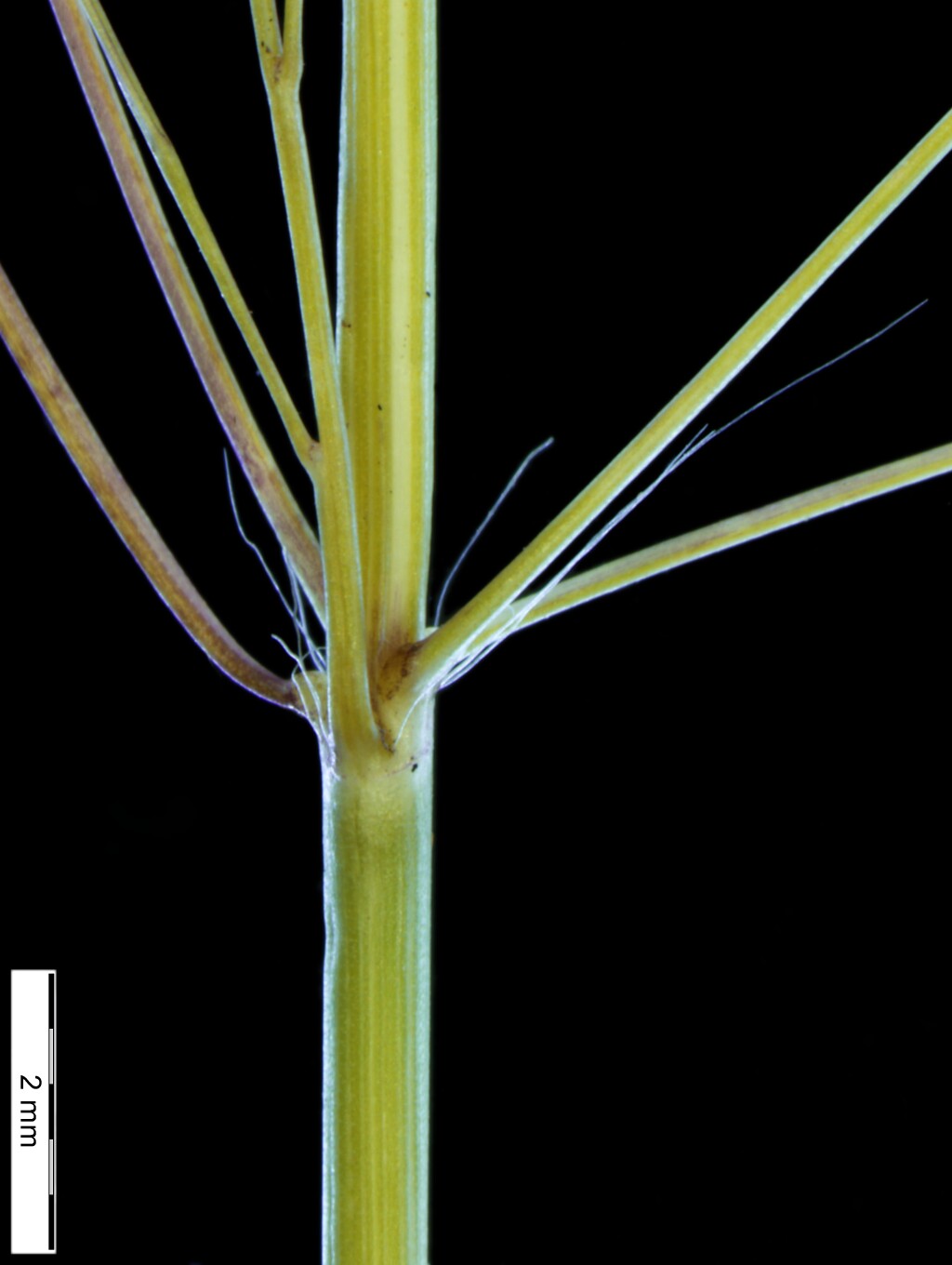Eragrostis pilosa
(L.) P.Beauv. Soft Love-grassTufted annual, culms ascending to erect, to 50 cm high. Leaves glabrous; blade flat, to 15 cm long and 3 mm wide, scabrous on upper surface. Inflorescence a loose pyramidal panicle to 20 cm long and 15 cm wide, lower branches whorled, usually with a sparse tuft of hairs 4 mm long or more in the axils. Spikelet 4–15-flowered, 3–7(–9.5) mm long and 1–2 mm wide, dark grey- to purplish-green; glumes acute to obtuse, the lower 0.4–0.6 mm long, the upper 1–1.6 mm long; lemma 1–1.7 mm long, obtuse, finely scabrous along the keel; palea slightly shorter than lemma; anthers c. 0.2 mm long. Flowers Nov.–Jan.
Wim, VVP, VRiv, MuF, GipP, Gold, CVU, NIS, EGU, HSF, Strz. Naturalized in all States except NSW, Tas. Indigenous throughout much of Europe. In Victoria, mostly recorded from irrigated districts in the central north, but also locally common in south-eastern suburbs of Melbourne, and along roadsides in central Gippsland.
A single collection from the inner Melbourne suburb of Parkville is unlike other Victorian specimens of E. pilosa in having the axils of the branches of the panicle virtually glabrous, a condition occasionally observed in European material.
Walsh, N.G. (1994). Poaceae. In: Walsh, N.G.; Entwisle, T.J., Flora of Victoria Vol. 2, Ferns and Allied Plants, Conifers and Monocotyledons, pp. 356–627. Inkata Press, Melbourne.
 Spinning
Spinning




